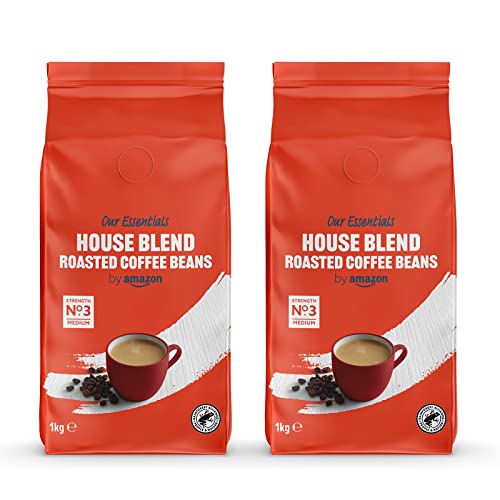Which Coffee Beans Are the Best?
The type of beans that you choose can make the difference when is time to make a fantastic cup. Each one has a distinct flavor that is complemented by a wide variety of beverages and recipes.
Panama is the leading country with its unique Geisha beans. These beans are highly evaluated in cupping tests, and they are also quite expensive at auction. Ethiopia and specifically Yirgacheffe, isn't far behind.
1. Geisha Beans from Panama
If you're searching for the finest coffee beans in the world Look at Geisha beans from Panama. Geisha beans are prized for their distinctive aroma and flavor. These rare beans are grown at very high altitudes and undergo a unique method of processing that creates their distinctive flavor. The result is a cup with a rich, smooth flavor.
Geisha coffee is a staple of Ethiopia but was introduced into Panama for the first time in 1963. Geisha coffee is known to win competitions with its exquisite taste and aroma. Geisha beans are also expensive because of the labor required to grow them. Geisha coffee plants are more difficult to cultivate because they require higher elevations and unique climate conditions.
Geisha beans should be handled with care, as they are delicate. They need to be carefully separated and prepared with care for roasting. Otherwise, they can become bitter and acidic.
The Janson Coffee Farm is located in Volcan. The farm is committed to preserving the environment and specializes in producing top-quality beans. They utilize solar panels to provide energy, reuse water and waste materials, and use enzyme microbes to improve the soil. They also plant trees and utilize recycled water for washing. The coffee they produce is a Washed Geisha and was awarded the highest score at a Panama Coffee Competition.
2. Ethiopian Coffee
Ethiopia is a major coffee producer that has a long history of producing some of the world's finest coffees. unroasted coffee beans wholesale rank as the 5th largest coffee producers in the world, and their beans are highly sought-after for their distinctive fruity and floral flavors. Differently from other beans, Ethiopians taste their best when they are roast to a medium or even a light roast. This allows the delicate floral notes to remain while highlighting their citrus and fruity flavors.

Sidamo beans, which are famous for their crisp acidity, are among the best in the world. However, other coffees, such as Yirgacheffe or Harar are also highly regarded. Harar is Ethiopia's oldest and most popular variety. It has a distinctive wine and mocha flavor. Coffees from the Guji region are also known for having complex flavors and a distinct Terroir.
Natural Process is a different type of Ethiopian coffee that is made through dry processing, instead of wet processing. The difference between the two methods is that wet-processing involves washing coffee beans, which tends to remove some of the sweetness and fruity taste from the beans. Natural Ethiopian coffees that were processed were not as popular as the washed counterparts. They were more often used to brighten blends than offered on the market for specialty coffees. However, recent technological advances have made it possible to get higher-quality natural Ethiopians.
3. Brazilian Coffee
Brazilian Coffee is a rich blend of different types of beans. It is described as having low acidity. It has a sweet flavor with hints of cocoa. The flavors vary based on the region and state it is grown. It is also renowned for its citrus and nutty notes. It is a great option for those who prefer medium-bodied coffee.
Brazil is the largest coffee exporter and producer in the world. Brazil produces more than 30 percent of the world's beans. Brazil's economy is heavily reliant on this large agricultural industry. The climate is perfect for coffee cultivation in Brazil, and there are fourteen major coffee-producing regions.
The principal beans that are used in Brazilian coffee are Catuai, Mundo Novo, Obata, and Icatu. They are all varieties of Arabica. There are a variety of hybrids that include Robusta. Robusta is the coffee bean that was first discovered in Sub-Saharan Africa. It's not as delicious and aromatic as Arabica, but it's more easy to cultivate.
It is important to keep in mind that slavery is a reality in the coffee sector. Slaves in Brazil are often subjected to long and exhaustive workdays and often do not have adequate housing. The government has taken steps to address this issue by establishing programs to help farmers with their debts.
4. Indonesian Coffee
The finest Indonesian coffee beans are known for their earthy, dark flavor. The volcanic ash that's mixed into the soil gives them a robust body and low acidity that makes them perfect for blending with higher-acidity beans from Central America and East Africa. They also react well to roasts that are darker. Indonesian coffees have a complex and rustic flavor profile. They typically have notes of leather, tobacco, wood, ripe fruit and spices.
The major producers of coffee in Indonesia are located on Java and Sumatra with a few coming from Sulawesi, Bali, and Papua New Guinea. A lot of farms in this region use a wet-hulling process. This is different from the washed process used in most parts of the world. The coffee cherries are de-pulped and then washed and dried. The hulling reduces the amount water present in the coffee that can limit the effect of rain on the final product.
Mandheling is one of the best-known and highest-quality varieties of Indonesia. It is a product of Toraja. It is a rich and full-bodied coffee with hints of candied fruit and a strong chocolate flavor. Other varieties of coffee from this region are Gayo and Lintong. They are typically wet hulled and have a full-bodied and smoky flavor.
